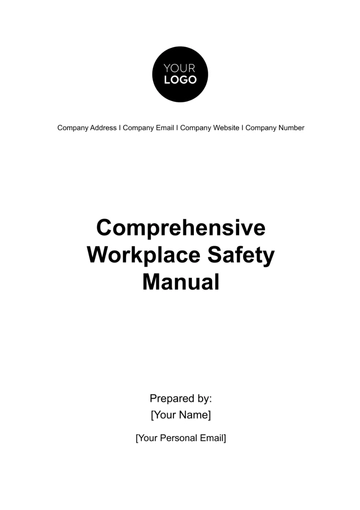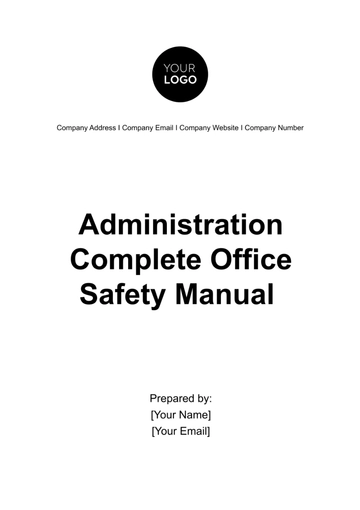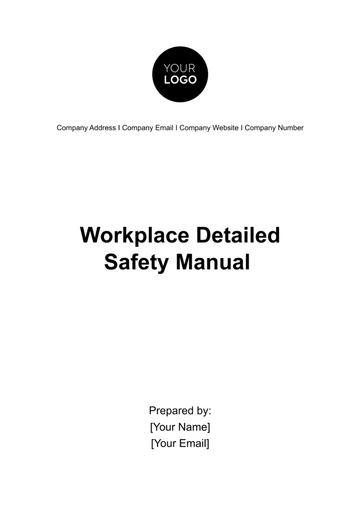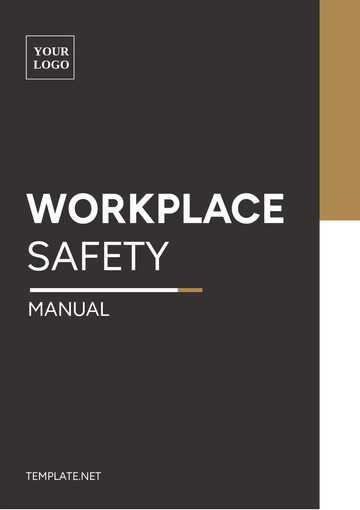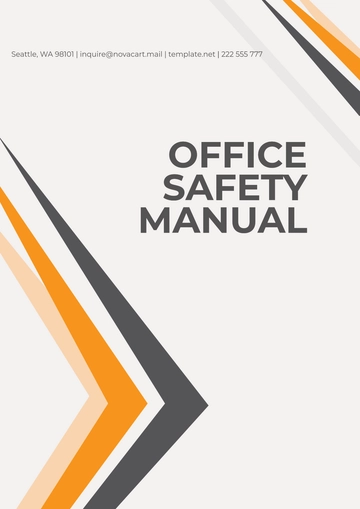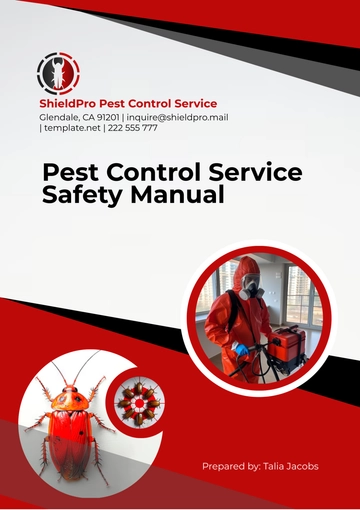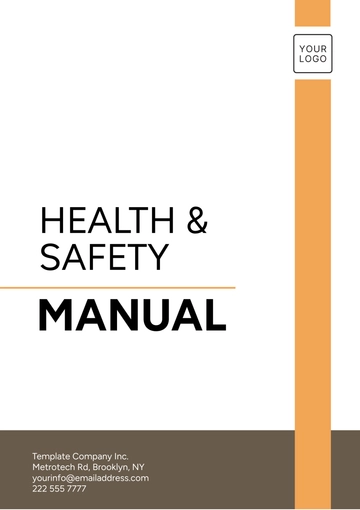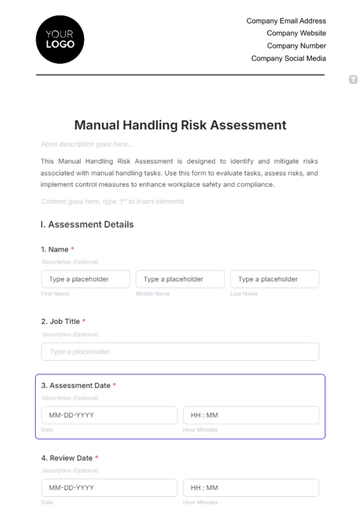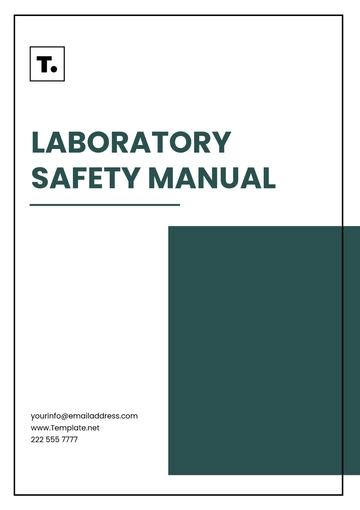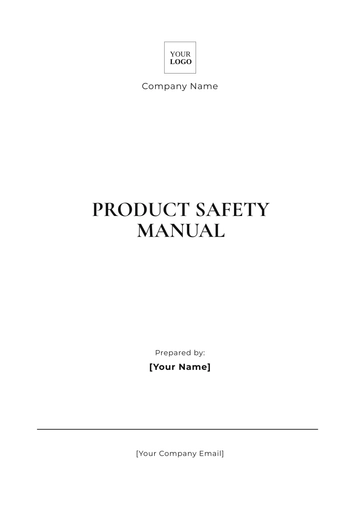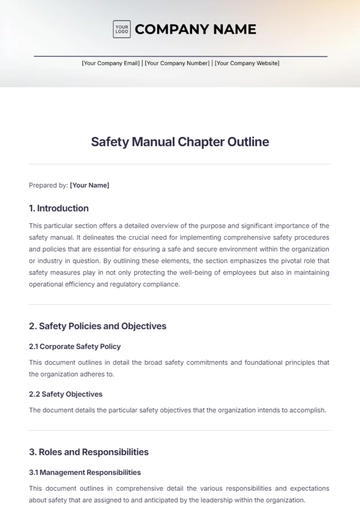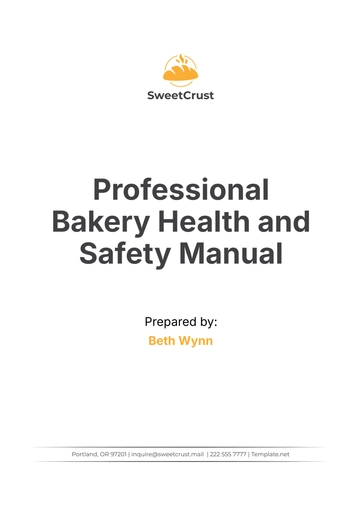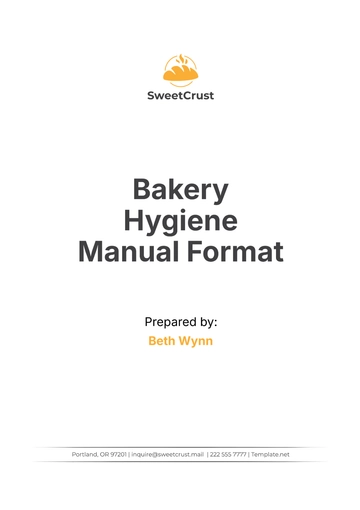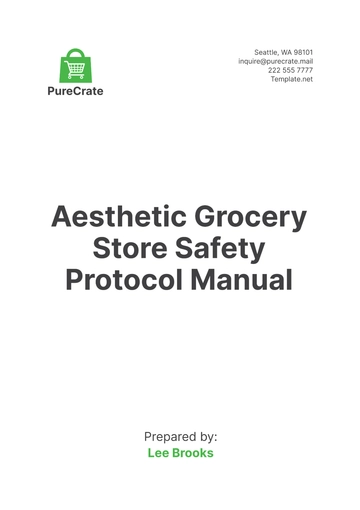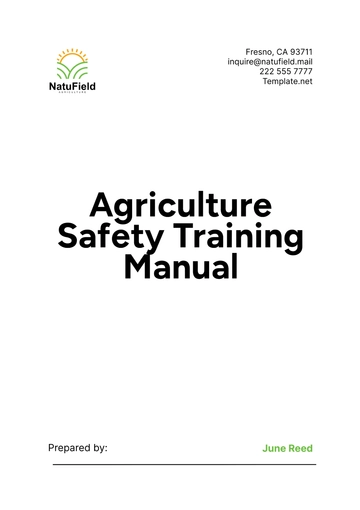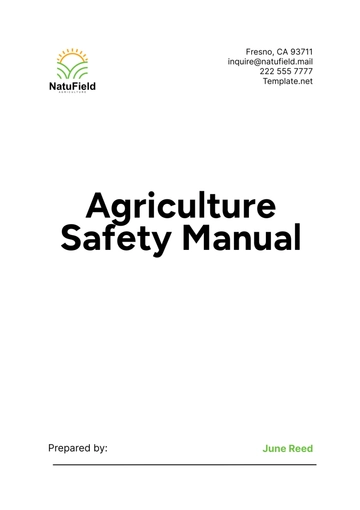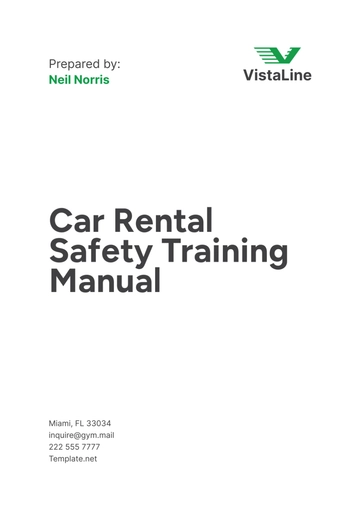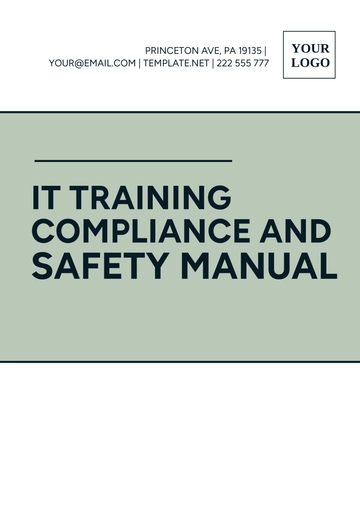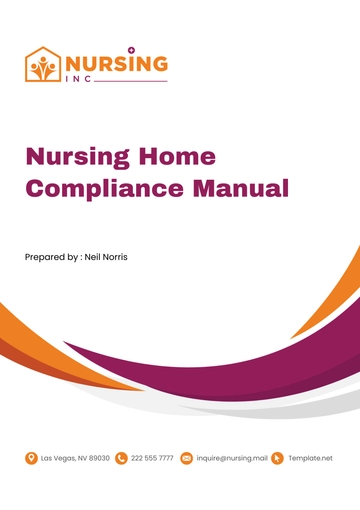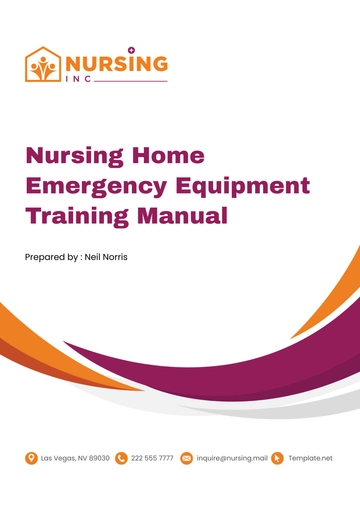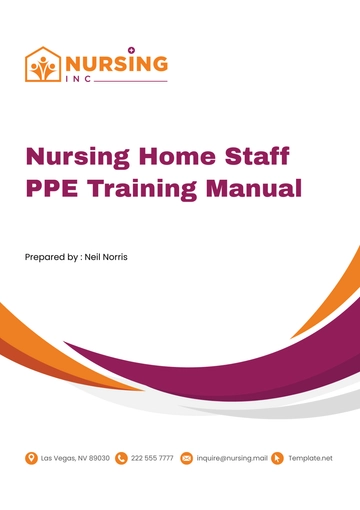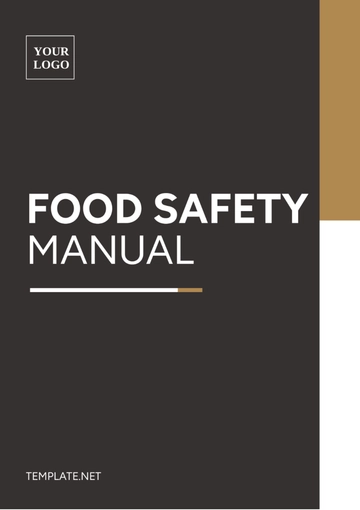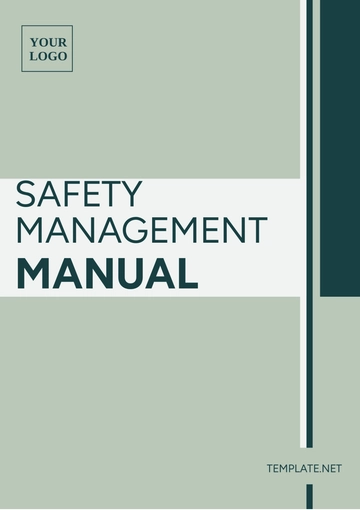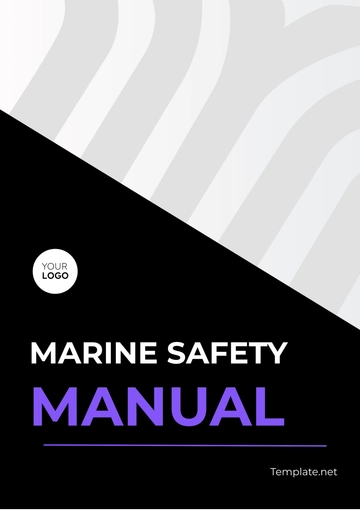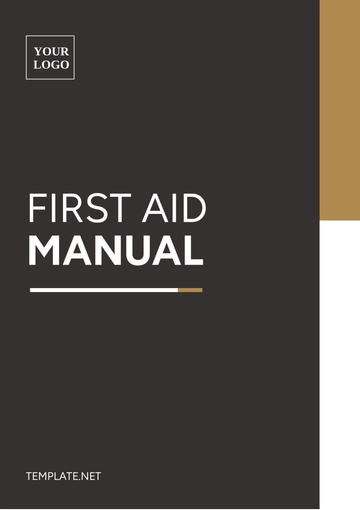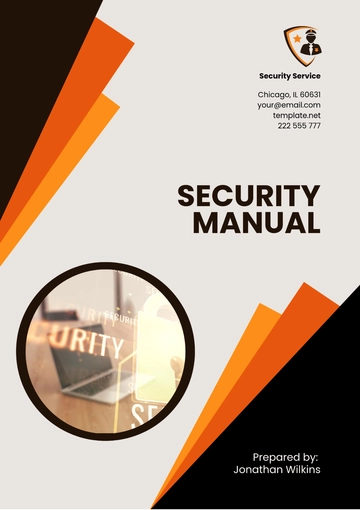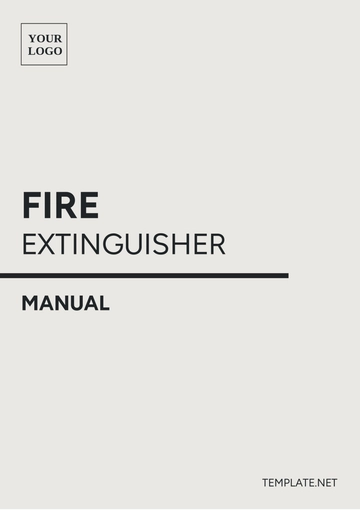Free Car Rental Safety Training Manual
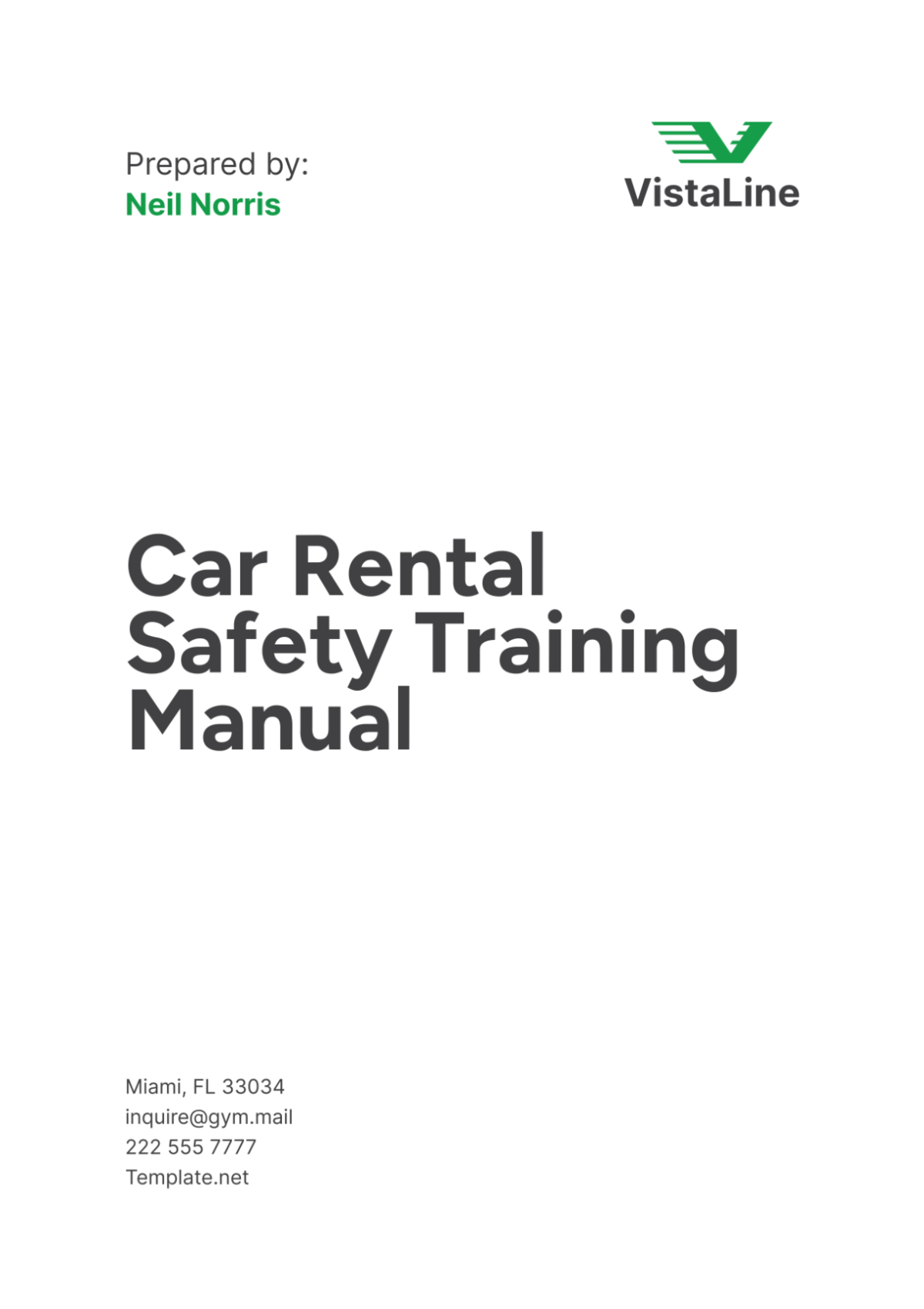
I. Overview
A. Introduction
At [Your Company Name], we prioritize the safety of our employees and customers. The Car Rental Safety Training Manual is designed to ensure that all staff members are equipped with the knowledge and skills necessary to maintain a safe environment. This manual provides comprehensive guidelines and procedures to uphold safety standards throughout our operations.
B. Purpose
The purpose of this manual is to outline the safety policies, procedures, and practices that must be followed by all employees. It serves as a training resource to educate staff on safety measures, emergency procedures, and regulatory compliance, ensuring that safety is an integral part of our daily operations.
C. Importance of Safety in Car Rental Operations
Safety is crucial in the car rental industry to protect employees, customers, and assets. Proper safety practices reduce the risk of accidents, enhance customer satisfaction, and ensure compliance with legal and regulatory requirements. By fostering a culture of safety, [Your Company Name] aims to maintain a positive reputation and secure a safe working environment.
II. Company Safety Policies
A. General Safety Policies
[Your Company Name] is committed to providing a safe workplace for all employees. Our general safety policies include:
Adhering to all applicable safety regulations and standards.
Promoting safety awareness through regular training and communication.
Ensuring that all safety equipment is maintained and accessible.
Reporting and addressing any safety hazards or incidents promptly.
B. Employee Safety Responsibilities
Employees at [Your Company Name] play a vital role in maintaining a safe work environment. Each employee is responsible for:
Following all safety procedures and protocols.
Reporting safety hazards, incidents, and near misses to their supervisor.
Participating in safety training sessions and staying informed about safety updates.
Using personal protective equipment (PPE) as required.
C. Customer Safety Expectations
Customers are expected to adhere to safety guidelines to ensure their well-being and the safety of others. [Your Company Name] provides customers with safety information and expects them to:
Follow all traffic laws and regulations while operating rental vehicles.
Report any vehicle issues or accidents immediately.
Use seat belts and other safety features of the vehicle.
III. Vehicle Safety Inspection Procedures
A. Pre-Rental Vehicle Inspection
Ensuring that rental vehicles are in safe and operable condition before they are rented out is a top priority. The pre-rental vehicle inspection involves several steps:
Exterior Check
Employees must inspect the exterior of the vehicle for any visible damage, including dents, scratches, and broken lights. They should also check the condition of the windshield, windows, and mirrors.
Interior Check
The interior check involves inspecting the cleanliness and functionality of the vehicle's interior components. Employees should verify that the seats, seat belts, dashboard controls, and air conditioning system are in good working order.
Engine and Fluid Levels
Employees must check the engine oil, coolant, brake fluid, and windshield washer fluid levels. Any deficiencies should be addressed before the vehicle is rented out.
Tire Condition and Pressure
Employees should inspect the tires for wear and tear, ensuring that there are no punctures or bald spots. Tire pressure should be checked and adjusted to the recommended levels.
B. Post-Rental Vehicle Inspection
The post-rental vehicle inspection is conducted when the vehicle is returned to ensure it is in good condition for the next customer.
Return Condition Assessment
Employees must assess the overall condition of the vehicle, checking for any new damage or issues that may have occurred during the rental period.
Damage Reporting
Any damage found during the post-rental inspection should be documented and reported immediately. The vehicle should not be rented out again until the damage has been repaired.
Maintenance Scheduling
Based on the post-rental inspection findings, the vehicle may need routine maintenance or repairs. Employees should schedule maintenance services to keep the vehicle in optimal condition.
IV. Employee Training and Certification
A. Driver Safety Training
Driver safety training is essential for employees who will be driving rental vehicles or interacting with customers. This training covers several key areas:
Defensive Driving Techniques
Employees learn defensive driving techniques to anticipate and respond to potential hazards on the road. This includes maintaining a safe following distance, scanning for potential dangers, and reacting appropriately to various traffic conditions.
Emergency Handling
Training in emergency handling equips employees with the skills to manage unforeseen situations, such as accidents or vehicle malfunctions. They learn how to safely pull over, contact emergency services, and provide assistance to passengers.
Distracted Driving Prevention
Employees are educated on the dangers of distracted driving, including the use of mobile devices, eating, and other distractions. They are encouraged to focus solely on driving while behind the wheel.
B. Vehicle Maintenance Training
Proper vehicle maintenance is crucial for safety and customer satisfaction. Employees receive training in several maintenance areas:
Routine Maintenance Procedures
Employees learn how to perform routine maintenance tasks, such as oil changes, tire rotations, and brake inspections. This training ensures that vehicles are kept in good working order.
Identifying and Reporting Issues
Employees are trained to identify common vehicle issues, such as unusual noises or warning lights on the dashboard. They learn how to report these issues for further inspection and repair.
Use of Maintenance Equipment
Training includes the proper use of maintenance equipment, such as jacks, wrenches, and diagnostic tools. Employees are instructed on safety procedures when using these tools to prevent accidents and injuries.
C. Certification and Recertification Requirements
To ensure ongoing competence and safety awareness, [Your Company Name] has established certification and recertification requirements:
Initial Training Program
New employees must complete an initial training program covering all aspects of vehicle safety and maintenance. This program includes both classroom instruction and hands-on practice.
Ongoing Training and Refresher Courses
Employees participate in ongoing training sessions and refresher courses to stay updated on the latest safety practices and regulations. These sessions are scheduled regularly to ensure continuous learning.
Certification Process
Upon successful completion of the training programs, employees receive certification. Recertification is required periodically to ensure that employees maintain their knowledge and skills.
V. Customer Safety Information
A. Safety Information for Customers
Providing customers with safety information is essential to ensure their well-being while using our rental vehicles. This information is included in the rental agreement and provided verbally during the rental process.
Rental Agreement Overview
The rental agreement includes a comprehensive overview of the terms and conditions, including safety guidelines. Customers are required to read and acknowledge these terms before renting a vehicle.
Safe Driving Tips
Customers receive a list of safe driving tips, such as obeying speed limits, avoiding distractions, and wearing seat belts. These tips help promote safe driving habits.
Emergency Contact Information
Emergency contact information is provided to customers, including phone numbers for roadside assistance, emergency services, and [Your Company Name]'s customer support. This ensures that customers can quickly obtain help in case of an emergency.
B. Vehicle Operation Instructions
Customers are given detailed instructions on how to operate the rental vehicle safely and effectively.
Controls and Features
Employees provide an overview of the vehicle's controls and features, such as the ignition, lights, windshield wipers, and climate control system. Customers are shown how to use these features properly.
Navigation and GPS Use
Customers are instructed on the use of the vehicle's navigation and GPS systems. This includes entering destinations, adjusting settings, and following directions safely.
Fueling and Refueling
Employees explain the fueling and refueling process, including the type of fuel required and how to operate the fuel pump. Customers are reminded to refuel the vehicle before returning it.
C. Accident and Breakdown Procedures
In the event of an accident or breakdown, customers need to know how to respond appropriately.
Immediate Actions
Customers are advised on the immediate actions to take in case of an accident or breakdown. This includes pulling over to a safe location, turning on hazard lights, and ensuring the safety of all passengers.
Reporting the Incident
Customers are instructed to report the incident to [Your Company Name] and the appropriate authorities. They should provide details about the location, nature of the incident, and any injuries or damages.
Obtaining Assistance
Customers are given guidance on how to obtain assistance, whether through roadside assistance services or contacting [Your Company Name]. This ensures that help is provided quickly and efficiently.
VI. Emergency Procedures
A. Emergency Response Plan
[Your Company Name] has established a comprehensive emergency response plan to manage various types of emergencies effectively.
Incident Reporting
All employees are trained to report incidents immediately. This includes accidents, injuries, and hazardous conditions. Prompt reporting allows for a swift response and resolution.
Coordination with Emergency Services
In the event of a serious incident, employees must coordinate with emergency services, such as police, fire, or medical personnel. This ensures that professional assistance is provided when needed.
Evacuation Procedures
Employees are trained on evacuation procedures in case of emergencies that require vacating the premises. This includes knowing the evacuation routes, assembly points, and ensuring that all personnel and customers are accounted for.
B. First Aid Training
Basic first aid training is provided to employees to equip them with the skills to handle medical emergencies.
Basic First Aid Techniques
Employees learn basic first aid techniques, including CPR, wound care, and treating minor injuries. This training helps them provide immediate assistance until professional help arrives.
Use of First Aid Kits
Employees are trained on the proper use of first aid kits available on-site. They learn how to use various supplies, such as bandages, antiseptics, and medical gloves.
Responding to Medical Emergencies
Training includes how to respond to different types of medical emergencies, such as heart attacks, allergic reactions, and fractures. Employees are taught to remain calm and provide appropriate care.
C. Fire Safety Procedures
Fire safety is a critical component of our emergency procedures. Employees are trained to respond effectively in case of a fire.
Fire Prevention Measures
Employees learn fire prevention measures, such as proper storage of flammable materials, regular inspection of electrical equipment, and maintaining clear exit paths.
Fire Extinguisher Use
Training includes the correct use of fire extinguishers. Employees are taught the PASS (Pull, Aim, Squeeze, Sweep) technique to effectively extinguish small fires.
Evacuation During Fire
In the event of a fire, employees must follow evacuation procedures, ensuring that all customers and staff exit the building safely. They should guide customers to the nearest exits and assist those who need help.
D. Severe Weather Procedures
Severe weather conditions can pose significant risks. Employees are trained to handle such situations to ensure everyone's safety.
Weather Monitoring
Employees are responsible for monitoring weather forecasts and alerts. This helps them prepare for potential severe weather events, such as storms, floods, or extreme heat.
Shelter-in-Place Procedures
During severe weather, employees may need to implement shelter-in-place procedures. This involves moving customers and staff to designated safe areas within the building and securing the premises.
Post-Weather Assessment
After a severe weather event, employees conduct a post-weather assessment to identify any damage or safety concerns. This ensures that the premises are safe before resuming normal operations.
VII. Safety Inspections
A. Routine Vehicle Inspections
Regular inspections of rental vehicles are critical to ensure safety and reliability. [Your Company Name] mandates daily and weekly vehicle inspections, performed by trained personnel. These inspections include checking tire pressure, fluid levels, brakes, lights, and overall vehicle condition. Any issues identified must be documented and addressed immediately to prevent potential accidents.
B. Facility Inspections
Facility safety inspections are conducted monthly to ensure the premises are free from hazards. This includes checking fire extinguishers, emergency exits, lighting, and general cleanliness. Any identified hazards must be reported and rectified promptly.
C. Documentation and Reporting
All inspections must be documented, and any issues reported to management immediately. This documentation is crucial for maintaining a record of compliance and for reference in case of incidents.
VIII. Emergency Response
A. Emergency Contact Information
In the event of an emergency, having quick access to essential contact information is vital. [Your Company Name] maintains an updated list of emergency contacts, including local emergency services, management personnel, and key staff members.
Emergency Contact Information
Contact Person | Role | Phone Number |
|---|---|---|
Local Police | Emergency Services | |
Local Fire Department | Emergency Services | |
General Manager | Management | |
Safety Officer | Key Staff |
B. Evacuation Procedures
In the event of an emergency requiring evacuation, all employees must follow the designated evacuation routes and assemble at the predetermined safe locations. These procedures are practiced regularly through drills to ensure all staff are familiar with the process.
C. Incident Reporting
All incidents, regardless of severity, must be reported immediately to ensure a timely response and appropriate action. This includes accidents, near-misses, and any other safety concerns. A detailed incident report must be completed and submitted to management.
IX. Hazard Communication
A. Identifying Hazards
Employees must be able to identify potential hazards in the workplace. This includes understanding the types of hazards that may be present, such as chemical, physical, and ergonomic hazards.
B. Labeling and Signage
Proper labeling and signage are essential for hazard communication. All hazardous materials must be clearly labeled, and appropriate warning signs must be displayed in areas where hazards are present. This helps in preventing accidents and ensures compliance with regulatory standards.
C. Safety Data Sheets (SDS)
Safety Data Sheets provide essential information about hazardous materials, including handling procedures, risks, and first-aid measures. Employees must be trained on how to read and understand SDS, and these documents must be readily accessible at all times.
X. Personal Protective Equipment (PPE)
A. Types of PPE
Personal Protective Equipment (PPE) is crucial for employee safety. The type of PPE required depends on the specific tasks and associated risks. Common PPE includes gloves, safety glasses, high-visibility vests, and hearing protection.
B. Proper Use of PPE
Employees must be trained on the correct use of PPE. This includes how to wear, adjust, and maintain the equipment to ensure maximum protection. Proper use of PPE minimizes the risk of injury and exposure to hazards.
C. Maintenance and Replacement of PPE
PPE must be regularly inspected, maintained, and replaced as necessary to ensure it provides adequate protection. Damaged or worn-out PPE should be reported and replaced immediately.
XI. Continuous Improvement
A. Feedback and Reporting
Continuous improvement is essential for maintaining high safety standards. Employees are encouraged to provide feedback on safety practices and report any concerns or suggestions for improvement. This feedback is valuable for identifying areas for enhancement and implementing better safety measures.
B. Regular Training Updates
Safety training is not a one-time event but an ongoing process. Regular training updates and refresher courses ensure that employees stay informed about the latest safety practices and regulatory changes. These updates help reinforce safety knowledge and skills.
C. Safety Audits and Assessments
Periodic safety audits and assessments are conducted to evaluate the effectiveness of safety programs and identify areas for improvement. These assessments involve reviewing safety records, inspecting facilities, and interviewing employees. The findings are used to enhance safety policies and procedures continually.
Safety Audit Schedule
Audit Area | Frequency | Responsible Person |
|---|---|---|
Vehicle Inspections | Monthly | Safety Officer |
Facility Inspections | Quarterly | Facility Manager |
Training Programs | Annually | HR Manager |
By adhering to the guidelines and procedures outlined in this Car Rental Safety Training Manual, [Your Company Name] ensures the safety and well-being of both employees and customers, maintaining high standards of safety and service in the car rental industry.
- 100% Customizable, free editor
- Access 1 Million+ Templates, photo’s & graphics
- Download or share as a template
- Click and replace photos, graphics, text, backgrounds
- Resize, crop, AI write & more
- Access advanced editor
Ensure safety training efficiency with Template.net's customizable and editable Car Rental Safety Training Manual Template. Use the AI Editor Tool to create detailed training manuals. This user-friendly template ensures thorough and effective safety training, promoting a safe and compliant work environment.
